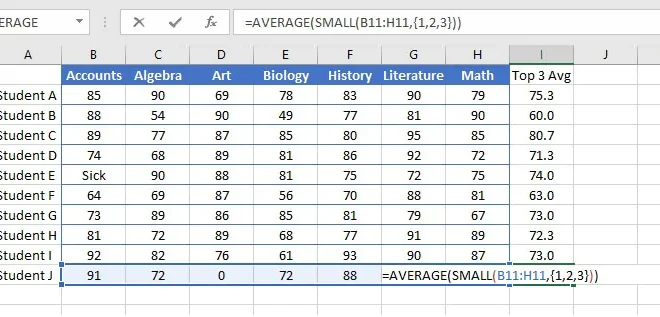Microsoft Excel is a powerful tool that simplifies data management and analysis. One of the most common tasks in Excel is calculating averages. In this article, we will explore four different ways to calculate averages in Excel: using the Arithmetic Mean, Median, Mode, and Weighted Average methods.
Just remember, education is the doorway to happiness. To receive a good education, you will need good teachers. Also, you will need to be up on the latest tech.
- Arithmetic Mean
The arithmetic mean is the most common method for calculating averages. It involves adding up all the values in a set of numbers and dividing the total by the number of values. In Excel, you can use the AVERAGE function.
= AVERAGE(range)
For example, if you want to calculate the average of cells A1 to A5:
= AVERAGE(A1:A5)
- Median
The median is the middle number in a sorted list of numbers. If there is an even number of values, the median will be the average of the two middle numbers. To calculate the median in Excel, use the MEDIAN function.
= MEDIAN(range)
For example, if you want to find the median of cells B1 to B5:
= MEDIAN(B1:B5)
- Mode
The mode is the most frequently occurring value within a set of data points. In Excel, there are two functions to calculate mode: MODE.SNGL and MODE.MULT.
– MODE.SNGL: Use this function to find a single mode within a range.
= MODE.SNGL(range)
For example, if you want to find the mode for cells C1 to C5:
= MODE.SNGL(C1:C5)
– MODE.MULT: Use this function to find multiple modes within a range.
=MODE.MULT(a_range)
For example, if you want to find multiple modes for cells D1 to D5:
=MODE.MULT(D1:D5)
- Weighted Average
A weighted average assigns different weights to each value instead of treating them equally. This method is useful when some values are more important than others. In Excel, the SUMPRODUCT function can be used to calculate a weighted average.
= SUMPRODUCT(weights_range, values_range) / SUM(weights_range)
For example, if you have values in cells E1 to E5 and their corresponding weights in cells F1 to F5:
=SUMPRODUCT(E1:E5, F1:F5) / SUM(F1:F5)
In conclusion, Excel offers various ways to calculate averages based on your data’s characteristics and needs. By using the Arithmetic Mean, Median, Mode, or Weighted Average methods, you can easily compute averages and analyze your data more accurately.
 Naasongs.fun
Naasongs.fun




